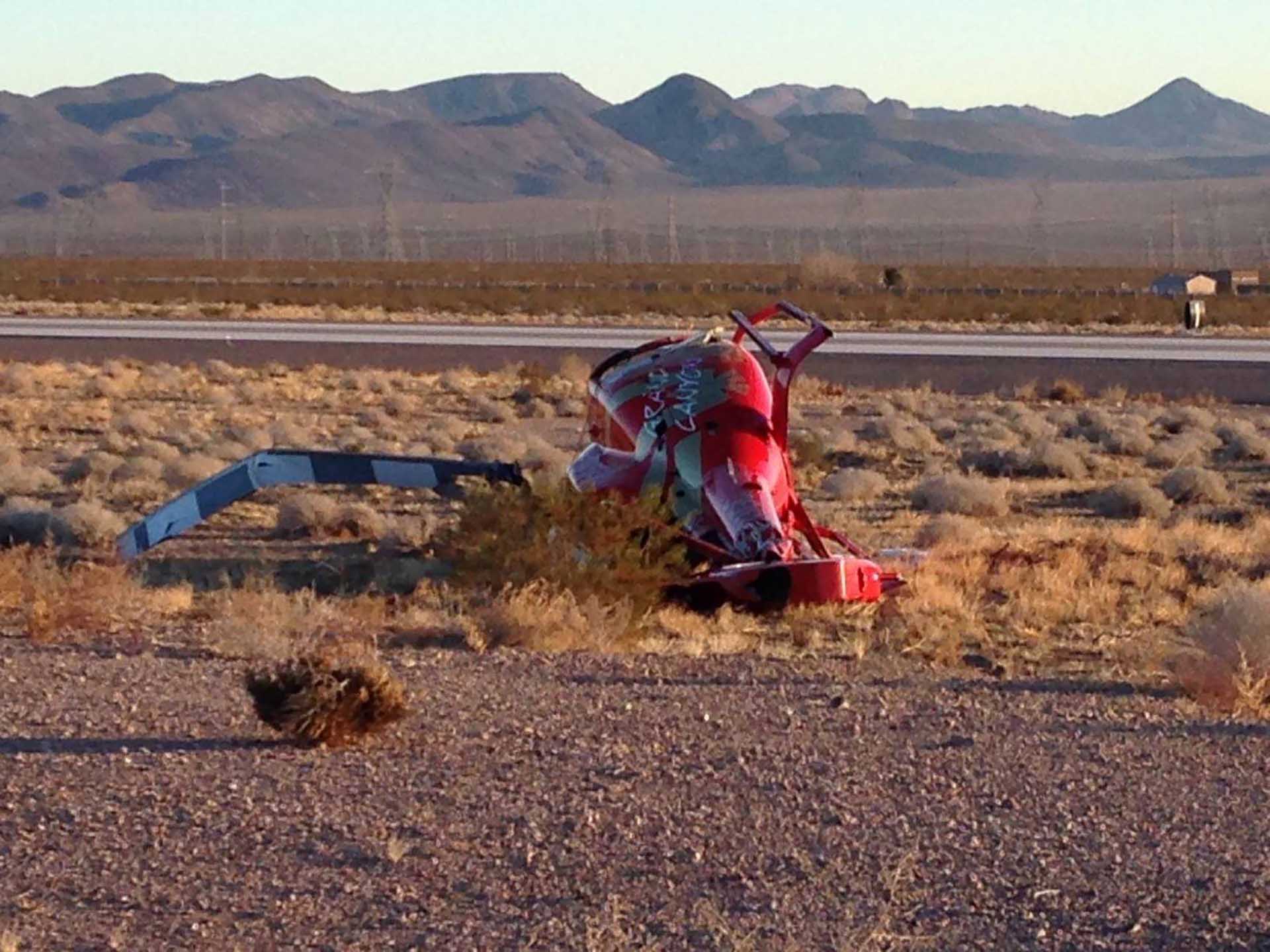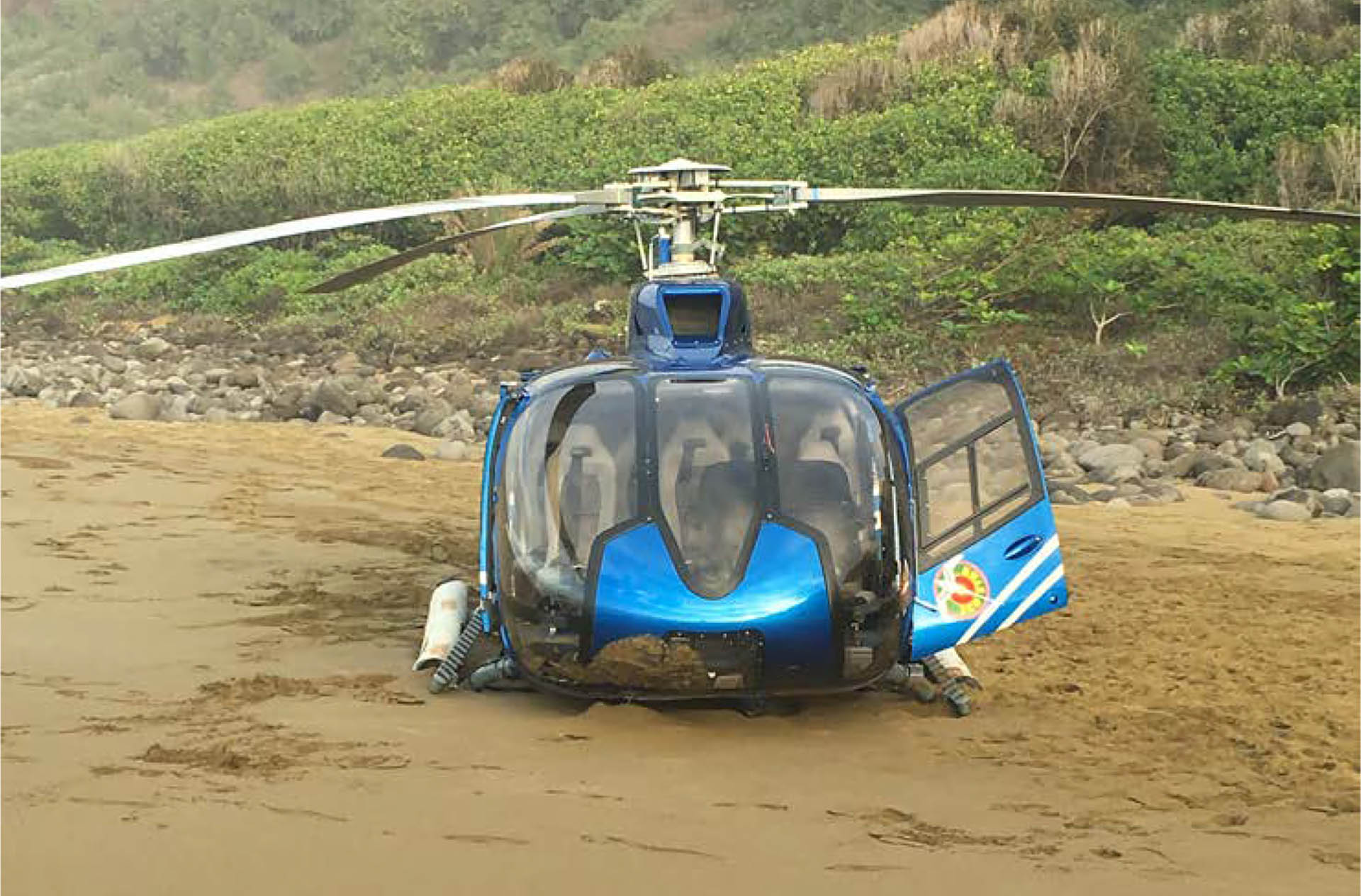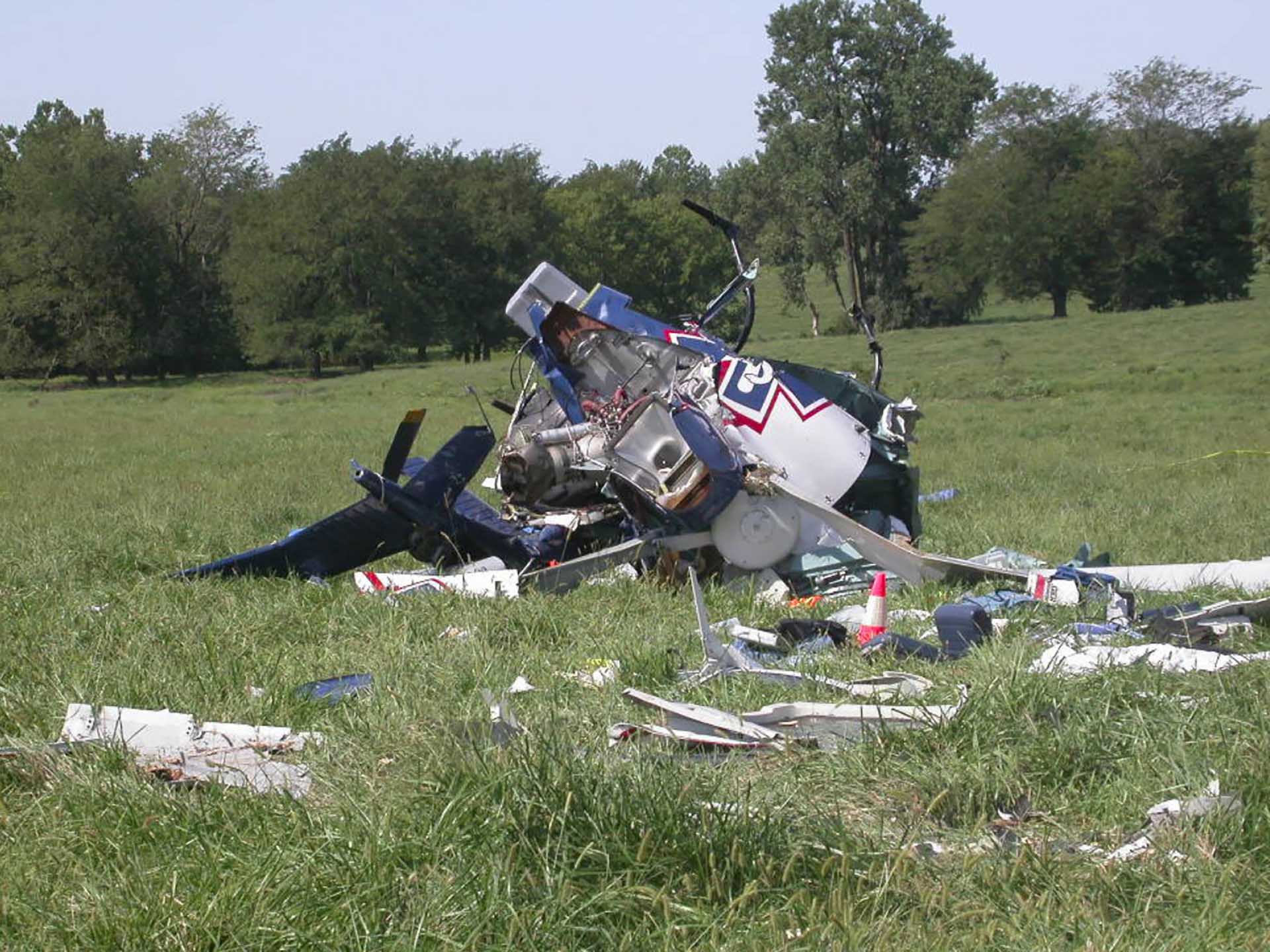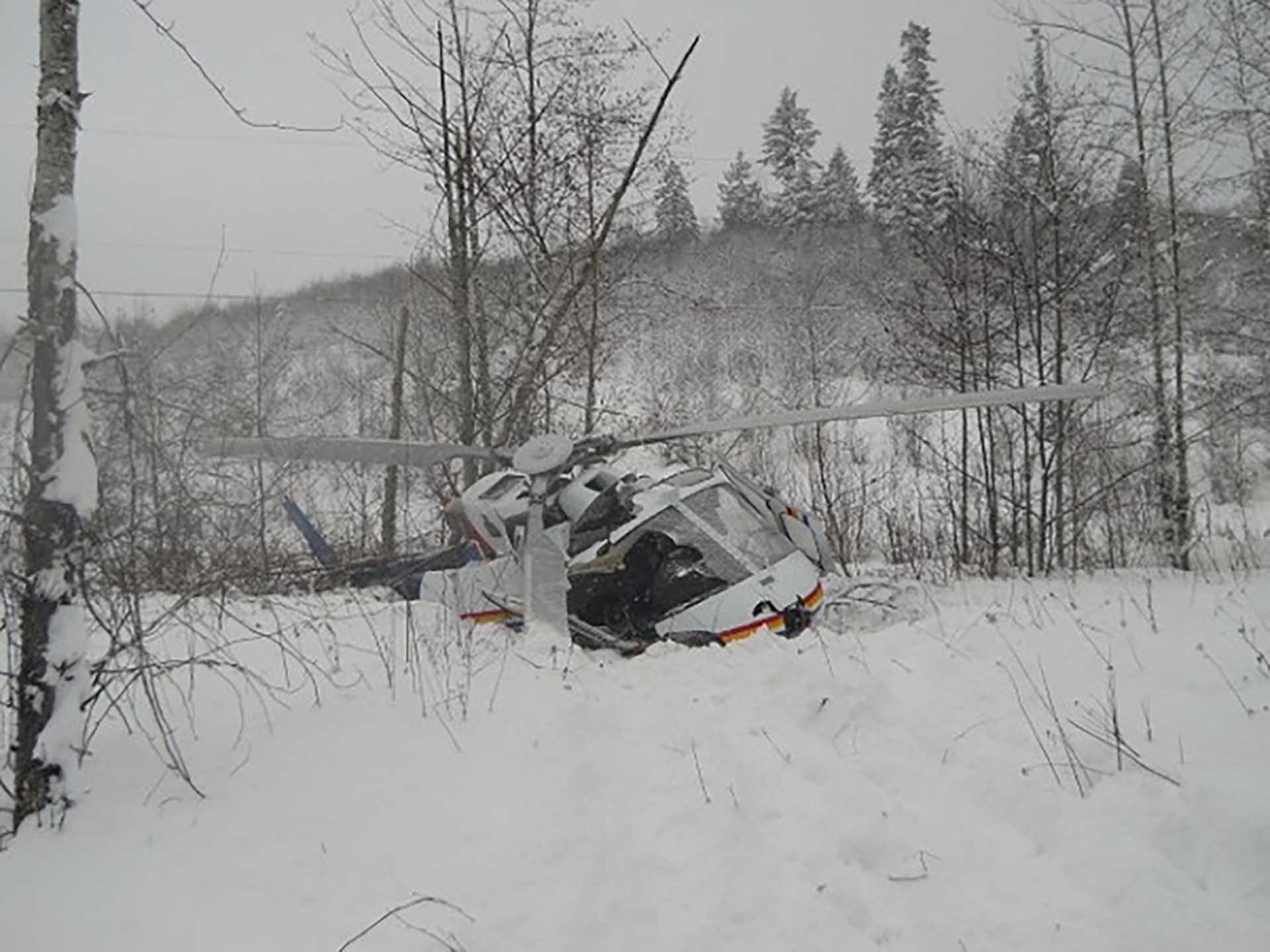False Security?
It's a beautiful day to fly the coastline with mild outside air temperatures and magnificent clear skies. With the temperatures in the high 70’s Fahrenheit and mid-20’s Celsius, this January afternoon's conditions are a far cry from the frigid temperatures of much of the other parts of the United States. The dazzling view, as on most days, is breathtaking and a testament to the majesty of the islands unbridled nature. As you fly up the coastline you search for any of the abundant sea-life that this area is known for.
With the shoreline within gliding distance, an airspeed of 80kts (knots), all gauges at a proper value, all caution lights extinguished and an altitude of approximately 2000ft (feet), you have checked all the boxes of aircraft control safety margins.
Your aircraft, an EC130T2, is a new addition to the fleet and is a roomy helicopter with an upgraded environmental control system and an increase in power from its predecessor. The left-hand drive aircraft, with the collective installed away from any possible passenger contact, is a great safety feature and allows most of the passengers to be on the land side of the aircraft when flown up the coast. Periodically, this configuration does require the pilot to switch from right hand manipulation of the cyclic to left hand to adjust radios or grab a bottle of water. But this scenario, when flying at altitude, becomes as normal as any other manipulation of the controls.
Though your job affords some of the finest daily views a pilot can experience, the amount of talking that the job requires can be overwhelming at times. The dry and sore throat you have is a common end of the day condition, and this day is no different. With a tickle in your throat and your automatic coughing reflex engaged, you can’t help but cough directly into your mic. With an apology to your passengers, you switch cyclic hands from right to left and pick up your bottle of water to quench the burning in your throat.

Rude Awakening
As the bottle touches your lips, your world’s status quo becomes unfamiliar and unsettlingly different. Everything in the helicopter has changed; the sound, the indications, the feel, the yaw. As all engine parameters start to decrease, the VEMD’s FLI changes to its triple display, lights start to illuminate on the warning/caution panel and the low rotor horn starts to sound in your headset. With the events but a blur of activity, the rotor rpm decreasing to below its’ redline is barely noticeable in the chaos of the event.
In the first few seconds of transformation to an irregular circumstance in a helicopter, the pilot either automatically reacts to the event, much like the automatic human reflex of catching a ball, or it stays still and the analytical portion of the brain tries to comprehend what just happened. Once the analytical portion of the brain determines the likely cause of the event, the brain will then decide on what course of action will be applied. The time this analysis takes can consume many seconds.
From the onset of the undetermined event to the switching of your left hand to the collective and your right hand to the cyclic, two seconds have elapsed. One second later you lower your collective to its full down position to try to recover the decaying rotor RPM.
A turn is then established to the right to join the coastline with a 30-degree roll and a 15-degree pitch downward. As the turn continues it is now eight seconds after the aircraft's malfunction, with a descent rate of 4000fpm (feet ) and an airspeed of 75kts. At one point during the turn the intermittent high rotor rpm aural warning indication began to sound with the NR now indicating 450 (20 rpm above its redline). Increasing the collective, the rotor rpm is corralled back into its limits and the descent rate slows to 2000fpm.
With the aircraft now at 900ft and the right turn continuing, the rotor once again goes low. Then by placing the collective in the full down position, the NR begins to recover.
It is now 11 seconds after the onset of the event and the realization of the failure has now come into view. With this newfound clarity you key your radio mic and announce, “I lost my engine”. Now at 600ft, 85kts and a descent rate of 2600fpm, the intermittent aural warning in your headset again indicates a rotor rpm of over 410. At 15 seconds after the onset of the engine failure the NR is now at 430 (the upper redline indication). Pulling the collective up, the NR is brought back into limits, but this application has the aerodynamic aircraft response of the nose of the helicopter pitching upward.
This nose up attitude slows your airspeed, and the raising of the collective to stop the rotor rpm increase has drooped the NR to a low status once again. Now at 20 seconds after the onset of the engine failure the aircraft is at 350ft, 60kts and has an indicated rotor rpm of 364. Three seconds later the NR is 340 and the airspeed is 40kts. At 275ft, with a near zero airspeed, the helicopter makes a pronounced vertical rapid descent to the beach surface. Pulling the collective, the NR decays to 260 as ground impact is made.

Impact
Since you were wearing your 4-point seat belt correctly, low, and tight across the waist, the energy attenuating seat does its job and collapses, reducing the severity of your back injuries. The other occupants of the helicopter were not so fortunate, with varying levels of improper seat belt placement. The least tightly securing passengers moved upward during the rapid descent, hovering them above their seats during the fall. Suspended by their seatbelt, the then rapid downward movement toward the seat at impact does not allow the energy absorbing to occur and massive spinal injuries are induced.
This accident occurred in 2016 and is not a unique or a surprising scenario. The events described above are obtained from its NTSB accident
docket which analyzed the recording of the aircrafts Onboard Image and Data Recorder. When compared to other engine failure accidents the
particulars of this event are very similar and the pilots of other engine failure incidents made similar control inputs.
Improper Inputs
These improper autorotational control inputs are not induced by chance but rather the control inputs made in these accidents have been taught to the pilot.
The plain truth is that in the helicopter industry we have been told a lie for 30 years to a point where we accept this lie as an unquestionable truth. This has so completely enveloped our community that to speak against the dogma is considered heresy. Those who speak against our shared illusion are disregarded and our own mental self-protection convinces us that we would do it differently had we piloted the accident helicopter.
The lie is the power recovery autorotation.
For pilots of single engine helicopters, the most import skill set to maintain is the ability to land the helicopter safely after an engine failure. For the first 30 years of the helicopter industry practicing full down autorotations was just another normal maneuver. Then the industry started using a particular helicopter for primary training that was more difficult to autorotate. Not impossible…. More difficult.
The sensical reaction to this should have been to address how to safely autorotate that helicopter. The industry reaction was to bring the engine back to flight status prior to ground contact and proclaiming this is the very same as taking the helicopter to the ground. With no consequences of the bottom of the maneuver, the control manipulation became ingrained. This control manipulation did not reflect the proper movements of the controls but rather the proper manipulation of the controls for re-induction of engine power to the rotor. The results from 30 years of accident reports reflect the detrimental outcome of this change.
So how as an industry, did we get to a point where the majority of helicopter pilots have done few to no full down autorotations while being the sole manipulators of the controls? It's a question we should all be asking and investigating answers to.

The Great Lie
The great lie in our industry started with new pilots being introduced to autorotations as difficult or dangerous maneuvers. How a person is introduced to a subject will determine his/her views toward it for the rest of their lives, law of primacy. You are taught that doing a power recovery autorotation is safer and will result in the same skill sets as a full down autorotation. If this were true, then after doing power recovery autos for many years the pilot should be proficient with the full down autorotation maneuver. The truth is that the muscle memory you obtain during power recovery autorotations will lead to a real-life landing at a high rate of descent.
This muscle memory is engrained and will not change in the actual maneuver. Most NTSB engine failure accident reports reflect this truth. So, since this is a reality, why do we continue down this road of self-induced delusional training?
The reality is that pilots have almost no control on whether we are exposed to full down autorotations or not. When a pilot first learns to fly a helicopter they are taught that the way to practice an engine failure is to roll the engine back to idle and then prior to ground contact to bring the power back in. It is expressed to them that taking the helicopter to the ground is too risky. That reasoning contains a certain amount of truth, as in that the instructor is often a low time pilot with little to no skills at landing that helicopter safely after an engine failure and the student is even at a lower level of ability. Of course, this could have been resolved with more experienced pilots teaching the autorotations, but this course of action was very rarely explored.
These same primary pilots go on to jobs like electronic news gathering, tours or EMS. The instructor pilots at these companies come from the same stock as the new hire and the company training is conducted using power recovery autorotations. This maneuver is comfortable for both pilots since they are both proficient at doing the power recovery autorotation maneuver. They pat themselves on the back after the maneuver ensuring themselves that they have the skills needed to safely land the helicopter after a real engine failure. Little do most pilots know, we have further ingrained the movements of the controls that will either lead injury or death in the actual occurrence.

Skill Degradation
Some pilots during the process of becoming a certified flight instructor (CFI), or after they became an instructor, perform full down autorotations regularly. Ability and confidence are abundant in their autorotational skills, and the pilot holds that as a memory of current ability status. The fact is that over time we lose a learned skill set or memory item. The amount of loss in ability correlates to the amount of exposure you had with the skill. Pilots who have stopped flying, for one reason or another for a period, often find that the skill set, though rusty, comes back quickly. Much like riding a bike. This regained solidification of the flying skill set will be proportional to the number of hours the pilot has flown. A pilot that has 5000 hours of flying will regain the skill set quickly after a year of not flying. A pilot with 100 hours of flight time may not regain all or any of the skills after a year of not flying. The full down autorotational skill set works the same. If a pilot did thousands of full down autorotations as a CFI, the time in which the skill is lost is greater. If a pilot has only performed five full down autorotations in their complete flying career, the loss in skills could happen in weeks.
Beyond the ability to perform a full down autorotation, the pilots perceived current ability status is distorted by the memory of the last autorotation performed. As humans we remember our ability with a skill the last time the skill set was used. We remember that perfect last auto and believe that we still are operating at that same level. We remember last perfect baseball pitch we made, but 30 years later we can’t get the ball over the plate. The truth is that over time, in proportion to the amount of full down autorotations that have been performed in a pilot’s career, the autorotational skill set will diminish in quality until it is completely forgotten.
Though we cannot control the training program at a prospective employer we do have the ability to choose a company to work for that does provide proper engine failure training.

Training
A good example of how full down engine failure training should be conducted in a large organization is The Los Angeles Police Department (LAPD). The helicopter unit at that department has close to 50 pilots, nine of which are instructors in the unit. Not only do they train most of their new pilots from zero hours to commercial standards, but once in the unit, they get training every three months. This training includes stuck pedals, hydraulic failures and full down autorotations. Not only are they doing full down autorotations, but they are also doing them with full fuel and a night sun landing light and a million-dollar camera installed on the helicopter. They are conducting full down autorotational training almost every day of the year and they are doing it safely.
So why is it dangerous for Company X to do full down autorotational training at but LAPD does not seem to have any problem with every pilot doing a block of them four times a year? First, from hour one of an LAPD pilots flight career they are taught that autorotations are performed to the ground and when performed regularly and within the proper parameters are not only safe but the ‘funnest’ portion of the training. They are oblivious to the prevailing mindset that the maneuver is dangerous.
The instructor pilots at the unit having risen through the department’s mindset of “training is important”, continue this disposition to the pilots they train. Not only do the instructor pilots provide training every day but they receive outside training to ensure they operate at their high level. This mindset provides for an extremely successful aviation department and is the example for the rest of worlds police departments.
To put it simply, a full down autorotation is challenging in one model of helicopter. Not impossible, but difficult. Most of the rest of the single engine helicopters in our industry are enjoyable to autorotate when conducted within its proper parameters and with a qualified safety pilot instructor.
You need to ask yourself, if your engine quits will you have the skills to survive the ground contact? You will not have an engine to arrest your rate of descent before ground contact is made. You will not possess proper collective manipulation skill set. At the bottom there is no power for a recovery.
 HOME
HOME


